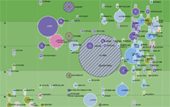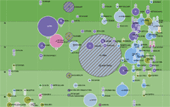GEI

The Gender Equity Index 2009 computed by Social Watch shows that the gender gap is not narrowing in most countries and a majority of the countries that show progress are those that were already comparatively better.
|
|
Source: . Published on Mon, 2013-01-21 09:36
» |
|
Published on Fri, 2010-05-14 15:40
Source: AWID |
| Source: . Published on Fri, 2010-04-30 12:31 |
|
Source: . Published on Tue, 2010-03-09 13:01
|
| Source: . Published on Sun, 2010-03-07 21:17 |

More than half the women in the world live in countries that have made no progress in gender equity in recent years. This is the main conclusion of the Social Watch 2008 Gender Equity Index (GEI) which, for the first time, shows recent evolution and trends in bridging the gap between men and women in education, the economy and empowerment.
The GEI 2008 illustrates that the greater equity levels to be found in education are not paralleled by acceptable levels in the economic field nor in the empowerment of women. Political empowerment is the area where most progress has been made in recent years as a result of active policies, yet economic equity shows disparate results, with as many countries regressing as those where there is progress. In education equity is comparatively closer, but the trend for many countries is to regress.
|
SUSCRIBE TO OUR NEWSLETTER







